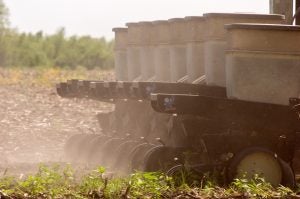The Purdue University/CME Group Ag Economy Barometer fell another two points in June, to a reading of 97. Farmers’ sentiments for the financial future are at an all-time low since data collection began in 2015. While the Current Conditions Index rose five points from May, the Index of Future Expectations fell a full five points, its lowest since October 2016. This number is surprisingly lower than indexes in April and May of 2020 when COVID was hitting.
While the Farm Financial Performance Index rose two points from May, 83 points are still one of the lowest readings of the last two years. When asked if their operation today is better off, worse off, or about the same compared to a year ago, 49 percent of respondents responded that their operations were worse off. Only 14 percent responded that their operations were better off than a year ago. These responses fell from last year’s rating of 28 and 14 percent respectively.
While farmer confidence remains higher for farm and ranch prices, only 57 percent respond that prices will be higher five years from now as opposed to the 70 percent who responded last month. Farmer’s willingness to make capital investment purchases remains at a record low of 35 for the second month in a row. The overwhelming response by farmers is that it’s not a good time to purchase machinery. 50 percent of respondents noted that they have been impacted by low machinery levels.
Among the greatest concerns for farmers are higher input costs with 43 percent of farmers noting this as their top concern. Following are the availability of inputs at 21 percent, lower crop and/or livestock prices at 17 percent, and environmental, climate, and farm policies respectively.
Over half of farmers who planted corn or soybeans in 2020 expect farmland cash rental rates to rise in the next year. 80 percent of these respondents expect these rates to rise five percent or more and 40 percent expect rates to rise by ten percent or more.

We may be seeing significant changes in winter wheat acreage based on producer survey responses. Winter wheat prices are higher, and 31 percent of producers said that they had planted winter wheat in the fall of 2021. Of this, 24 percent plan to increase their production. Out of the individuals who did not grow winter wheat, 14 percent said that they would plant winter wheat in the fall of 2022.
Despite a small increase in current conditions, rising input costs and prices continue to weigh heavily on producer’s level of optimism. Farmer optimism continues to be impacted by weaker future expectations.
Read the full Ag Economy Barometer report at here. The site also offers additional resources — such as past reports, charts and survey methodology — and a form to sign up for monthly barometer email updates and webinars. A short video analysis is available on YouTube as well. For even more information, check out the Purdue Commercial AgCast podcast.
The Ag Economy Barometer is calculated each month from 400 U.S. agricultural producers’ responses to a telephone survey. This month’s survey was conducted between June 13 and 17, 2022.

